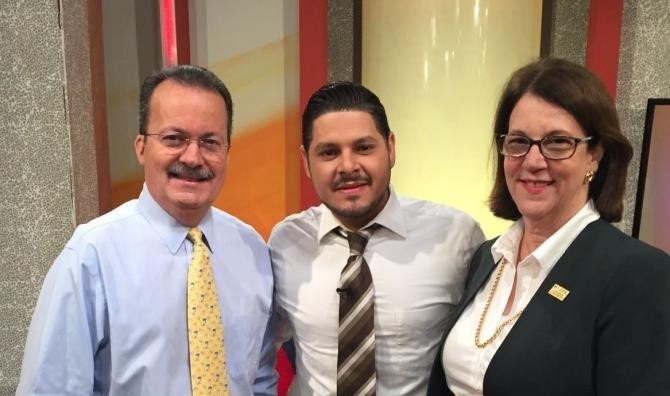In August 2016, the U.S. Department of Health and Human Services (HHS) declared the Zika outbreak in Puerto Rico a public health emergency. There is much that experts don’t yet understand about Zika, but scientists do know that it is transmitted primarily through the bite of infected mosquitoes and can also be sexually transmitted. While most infected individuals are asymptomatic or exhibit only mild symptoms such as fever, rash or joint pain, the virus can have dire consequences and poses a particular risk for unborn children of infected mothers. Zika infection during pregnancy has been linked to birth defects including congenital brain abnormalities and severe microcephaly. The emergency declaration recognizes that Zika has found a stronghold in Puerto Rico, where the tropical climate presents ideal conditions for mosquitoes to spread the virus. As of September 23rd, there were 22,348 laboratory-confirmed Zika cases in Puerto Rico,[1] and the Puerto Rico Department of Health had reported 1,871 cases in pregnant women by late September.[2] The CDC estimates the actual number of people infected is much higher and CDC Director Dr. Thomas Frieden has estimated that 25% of the island’s population could be infected in the first year.[3] .
Occurring in the midst of Puerto Rico’s unprecedented economic crisis, Zika has put further strain on an already overburdened healthcare system, creating a perfect storm for an explosive healthcare emergency.
Puerto Rico’s community health centers, which together operate more than 80 sites and served nearly 350,000 people in 2015, have been squarely on the front lines of responding to the Zika outbreak. Like their mainland counterparts, Puerto’ Rico’s health centers provide a medical home for the island’s vulnerable populations. Yet they face extraordinary challenges resulting from the island’s extreme poverty, high need and a general deterioration of the economy. A recent report from the Geiger Gibson /RCHN Community Health Foundation Research Collaborative found that nearly 1 person in 10 in PR depends on community health centers for their care. More than 75 percent of those served by Puerto Rico’s health centers are covered through public health benefits such as Medicare and Medicaid, but at reimbursement rates far lower than those stateside, and 12 percent remain uninsured; furthermore, there are no tax subsidies for private coverage.[4] In addition, a mass exodus of health professionals over the last several years has resulted in severe shortages and put a growing strain on hospitals, health centers and other providers.
Already recognized as high- performing primary care providers for all underserved people generally , Puerto Rico’s CHC’s serve many uniquely vulnerable populations including agricultural workers, public housing residents and homeless individuals most at risk for Zika infection and its serious complications. Social determinants of health such as poverty, educational opportunity, and substandard housing have a significant impact on overall population health. Those who live in substandard housing typically don’t have air-conditioning or even window screens. Poorer neighborhoods and the island’s many rural communities, lack adequate trash collection, and mosquitoes flourish in the tropical climate. In addition, a recent article in the Washington Post indicates that an estimated 65 percent of pregnancies are unplanned. [5]
CHCs have stepped up as the first responders in the fight against Zika. Health centers are working in coordination with other agencies to prevent the spread of Zika through direct outreach to educate the public about the dangers of Zika and to connect people with testing, screening, family planning services, contraception and treatment. Asociación de Salud Primaria de Puerto Rico (ASPPR), the Primary Care Association representing the Island’s health centers, is working with the Puerto Rico Health Department to develop a strategic plan that is responsive to the continuing threat. Moreover, ASPPR is coordinating with CHCs to help track infection rates in each of the municipalities and disseminate information and resources. The association has developed training programs to help outreach workers and clinicians effectively inform community members about the dangers of the virus and the importance of precautionary measures. Their strategy will include school-based campaign to educate children about Zika and how to prevent infection. One creative program is a traveling puppet show, where children learn about Zika in a fun and engaging way and can then go home and teach their family members about the virus. Further grassroots campaigns will be initiated and are intended to reach those who may be otherwise resistant to information or difficult to access through traditional networks. ASPPR has also facilitated donations of condoms, mosquito repellent, mosquito nets and larvicides for community-wide distribution.
In recognition of the significant threat posed by the virus, and the essential role of the island’s CHCs, HHS in April 2016 allocated 5 million dollars to the Commonwealth’s 20 community health centers to fight the spread of Zika. The emergency declaration issued in August underscores the public health threat and will allow the government to direct additional resources to combatting the disease. Still, a bill providing $1.1 billion in Zika funding nationally was deadlocked in Congress for months; while approved in late September, the delays had a cost for both services and research. And CHCs on the ground report that they have encountered substantial challenges in their efforts to provide information and stop spread of the virus.
One such challenge is the rural nature of the island, making it difficult to effectively reach some communities. In addition, many people are dealing with other immediate concerns. The economy is bad, the crime rate is high, wages are low and unemployment rates are rising; these problems all weigh heavily on public morale. Furthermore, Puerto Rico had already suffered through outbreaks of Dengue fever and Chikungunya, both mosquito-borne illnesses, before Zika emerged. Because these diseases are so widespread, some view new viruses as merely an unavoidable consequence of life on a tropical island, and misjudge the severity of the Zika threat. To combat these challenges, the first order of business is finding ways to provide meaningful information and education, and Puerto Rico’s network of CHCs is launching a creative and aggressive public education campaign, focused on convincing people to take special precautions such as spraying mosquito repellent, wearing protective clothing, and taking measures to prevent pregnancy.
Puerto Rico will not know Zika’s true impact for years to come. As the numbers of infected people continue to rise, Puerto Rico is struggling to track and respond to the growing epidemic. Meanwhile, community health centers continue to provide essential public health outreach and serve as the backbone for the delivery of high-quality, comprehensive primary care and preventive services. Yet they are underfunded and operate in an environment of extraordinary fiscal uncertainty and scarcity. To combat Zika, and avert future public health threats, the special role of health centers must be not merely recognized, but continuously supported through appropriate funding and reimbursement.
[1] Informe Semanal de Enfermedades Arbovirales (ArboV), Departamento de Salud de Puerto Rico. September 23, 2016. goo.gl/djmDkS
[2] Ibid.
[3] Sun, Lena. “Zika is Spreading Explosively in Puerto Rico, Report Says.” The Washington Post. July 29 2016. https://www.washingtonpost.com/news/to-your-health/wp/2016/07/29/zika-is-spreading-explosively-in-puerto-rico-report-says/
[4] Shin, Peter et al. Puerto Rico’s Community Health Centers in a Time of Crisis. the Geiger Gibson /RCHN Community Health Foundation Research Collaborative. December 2015. /wp-content/uploads/2015/12/Geiger-Gibson-Brief-43.pdf
[5] Brandi, Kristyn. , “We Know How to Fight Zika in Puerto Rico, But We Aren’t Giving Women the Tools to do It.” The Washington Post. August 22, 2016 https://www.washingtonpost.com/posteverything/wp/2016/08/22/we-know-how-to-fight-zika-in-puerto-rico-but-we-arent-giving-women-the-tools-to-do-it/?utm_term=.3ec3b1fdddd5,.




